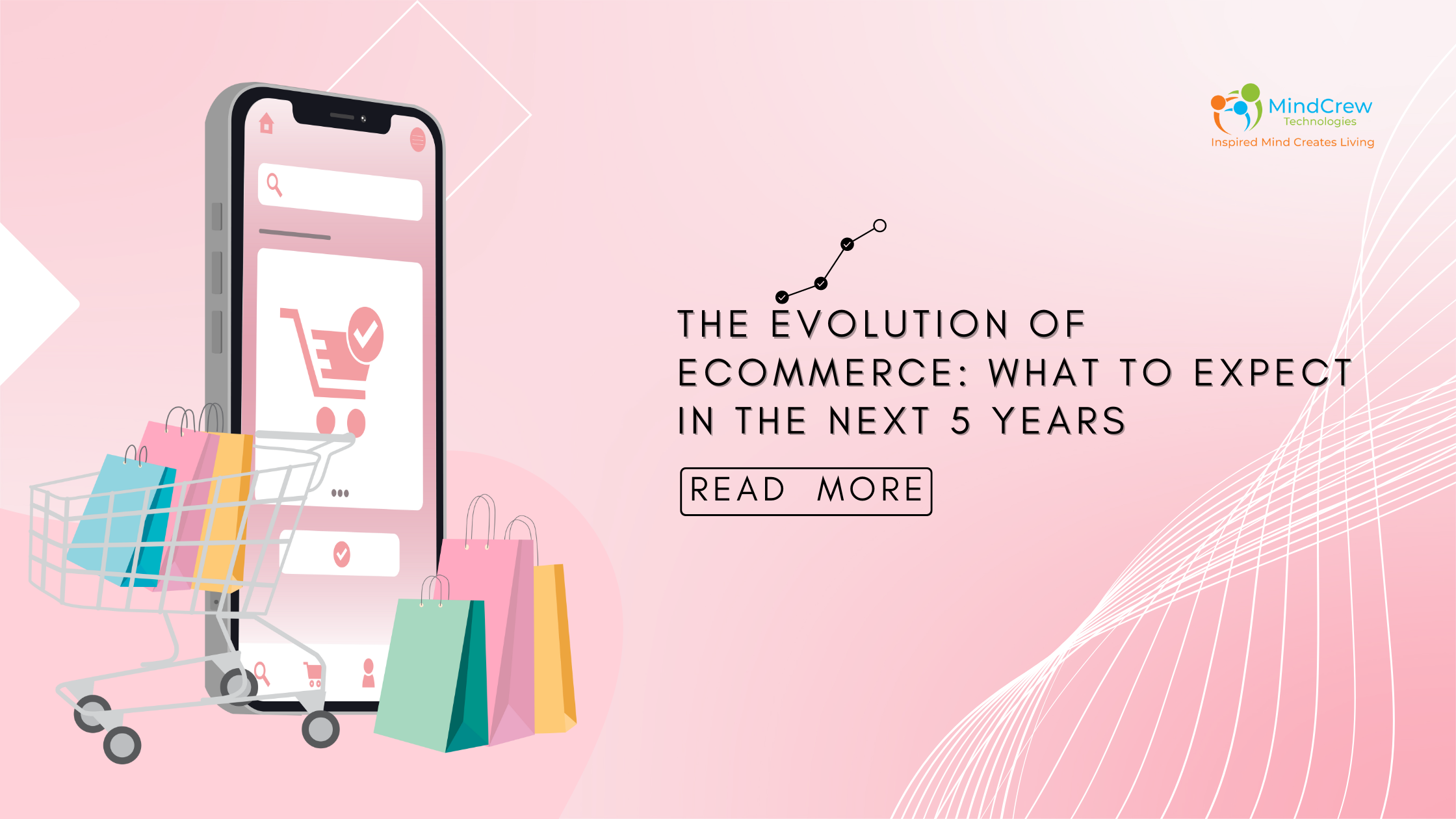The Evolution of Ecommerce: What to Expect in the Next 5 Years
The world of ecommerce has experienced a rapid transformation over the past decade. From the early days of online shopping to today’s sophisticated digital marketplaces, ecommerce continues to evolve, shaping the future of retail and consumer behavior. As we look ahead to the next five years, several key trends and innovations are set to redefine the ecommerce landscape. This blog explores these upcoming changes and provides insights into what businesses and consumers can expect.
The Rise of Omnichannel Retail
Integration of Physical and Digital Shopping
Omnichannel retailing has emerged as a major trend in ecommerce. This approach integrates physical and digital shopping experiences, allowing consumers to seamlessly transition between online and in-store interactions. According to a report by the National Retail Federation, 73% of consumers use multiple channels during their shopping journey.
In the coming years, we can expect even greater synergy between online and offline channels. Retailers will invest in technologies that enhance the in-store experience, such as augmented reality (AR) and virtual reality (VR). For instance, AR can allow customers to visualize products in their own homes before making a purchase, while VR can offer immersive shopping experiences.
Personalized Shopping Experiences
Personalization will be a cornerstone of the omnichannel strategy. Advanced data analytics and artificial intelligence (AI) will enable retailers to deliver tailored recommendations and offers based on individual preferences and behaviors. A recent survey by Epsilon revealed that 80% of consumers are more likely to make a purchase when brands offer personalized experiences.
Expect personalized marketing strategies to become more refined, with AI-driven algorithms predicting customer needs and preferences with high accuracy. This shift will enhance customer satisfaction and drive higher conversion rates.
The Growth of Mobile Commerce
Mobile Shopping Trends
Mobile commerce, or m-commerce, has been growing steadily, and this trend will continue to accelerate. Statista forecasts that mobile commerce will account for 72.9% of all ecommerce sales by 2025. This growth is driven by the increasing use of smartphones and tablets for online shopping.
Retailers will need to optimize their websites and apps for mobile devices to ensure a smooth and user-friendly experience. Mobile payment solutions, such as digital wallets and contactless payments, will become more prevalent, making transactions faster and more secure.
The Role of Mobile-First Design
A mobile-first design approach will become increasingly important. This means designing websites and applications primarily for mobile users before adapting them for desktop use. Mobile-first design ensures that users on smartphones and tablets have a seamless and enjoyable shopping experience. As mobile traffic continues to rise, businesses that prioritize mobile-first design will gain a competitive edge.
The Impact of Artificial Intelligence and Automation
AI-Powered Customer Service
Artificial intelligence is set to revolutionize customer service in ecommerce. AI-powered chatbots and virtual assistants will handle customer inquiries, provide personalized recommendations, and process orders more efficiently. According to a report by Grand View Research, the global AI in retail market is expected to reach $23.8 billion by 2027.
These AI tools will not only improve the efficiency of customer service but also enhance the overall shopping experience. Chatbots will be available 24/7, offering instant support and resolving issues without human intervention.
Automated Warehousing and Fulfillment
Automation will also play a significant role in ecommerce fulfillment. Robotics and automated systems will streamline warehousing and inventory management processes, reducing operational costs and improving order accuracy. A study by McKinsey highlights that automation could increase productivity in warehousing by up to 20%.
In the next five years, we can expect more ecommerce companies to adopt automated solutions for picking, packing, and shipping. This shift will lead to faster delivery times and a more efficient supply chain.
The Emergence of Social Commerce
Shopping Through Social Media Platforms
Social commerce, the integration of ecommerce with social media, is gaining momentum. Platforms like Instagram, Facebook, and Pinterest are enhancing their shopping features, allowing users to purchase products directly through social media posts and ads. According to eMarketer, social commerce sales are projected to reach $84.2 billion in the US by 2025.
Social media influencers and user-generated content will play a crucial role in driving sales. Brands will leverage social proof and community engagement to build trust and encourage purchases. Social commerce will also provide new opportunities for targeted advertising and personalized promotions.
The Growth of Live Shopping
Live shopping, where retailers host live-streamed events to showcase products and engage with viewers in real-time, is another emerging trend. This interactive format combines entertainment with shopping, creating a unique and engaging experience for consumers. A report by Coresight Research estimates that the global live commerce market will reach $35 billion by 2025.
Retailers will use live shopping to connect with their audience, answer questions, and offer exclusive deals. This format will enhance customer engagement and drive impulse purchases.
The Future of Payment Technologies
Digital Wallets and Cryptocurrencies
The future of payments in ecommerce will be shaped by the rise of digital wallets and cryptocurrencies. Digital wallets, such as Apple Pay and Google Wallet, offer a convenient and secure way to make transactions. The use of digital wallets is expected to grow, with a projected 4.8 billion mobile wallet users by 2025.
Cryptocurrencies, like Bitcoin and Ethereum, are also gaining traction as alternative payment methods. While still a relatively niche market, the adoption of cryptocurrencies in ecommerce is expected to increase. Businesses that accept cryptocurrencies will attract a new segment of tech-savvy consumers and benefit from lower transaction fees.
Enhanced Security Measures
As ecommerce continues to grow, so will the need for robust security measures. Consumers are increasingly concerned about data breaches and fraud, making it essential for businesses to invest in advanced security technologies. Two-factor authentication, biometric verification, and blockchain technology will become standard practices to protect sensitive information and ensure secure transactions.
Sustainability and Ethical Practices
Eco-Friendly Packaging and Shipping
Sustainability will be a key focus for ecommerce companies in the coming years. Consumers are increasingly aware of environmental issues and expect brands to adopt eco-friendly practices. According to a Nielsen report, 66% of global consumers are willing to pay more for sustainable products.
Ecommerce businesses will prioritize sustainable packaging solutions, such as recyclable materials and minimalistic designs. Additionally, companies will explore carbon-neutral shipping options and work towards reducing their overall environmental impact.
Ethical Sourcing and Transparency
Ethical sourcing and transparency will also gain importance. Consumers want to know the origins of the products they buy and the working conditions of those involved in their production. Brands that are transparent about their supply chain and demonstrate ethical practices will build trust and loyalty among their customers.
Conclusion
The ecommerce landscape is set to undergo significant changes in the next five years. From the rise of omnichannel retailing and mobile commerce to the impact of artificial intelligence and automation, businesses must stay ahead of these trends to remain competitive. Social commerce, innovative payment technologies, and a focus on sustainability will also shape the future of ecommerce.
By embracing these trends and adapting to the evolving needs of consumers, businesses can position themselves for success in the dynamic world of ecommerce. As technology continues to advance and consumer expectations evolve, the future of ecommerce promises to be both exciting and transformative.







